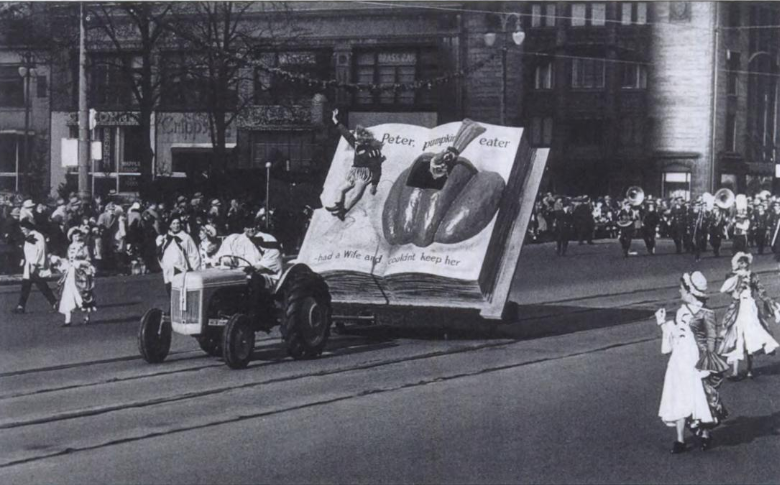Detroit’s Thanksgiving parade is as much a part of the city’s history as Motown and the automotive industry. Next to the Macy’s Thanksgiving Day Parade, America’s Thanksgiving Parade is arguably the country’s most famous, well-attended, and historical.
It began in 1924 and draws hundreds of spectators every fourth Thursday in November. It’s the parade’s world-famous vintage, papier-mâché heads and specialty performers that keep attendees interested and engaged along Woodward Avenue in downtown Detroit each year.
Imaginative Beginnings
The story of how Detroit became a parade destination is as colorful and exciting as the spectacle itself. Detroit’s parade shares the title for the second-oldest Thanksgiving parade in the United States, along with the Macy’s Thanksgiving Day Parade.
It all began in 1924 when the display director of the J.L. Hudson Company department store, Charles Wendel, learned of the Eaton’s Santa Claus Parade in Toronto and thought a similar parade would make a great addition to Detroit, which at the time was at the forefront of the auto industry boom.
Interestingly, it was the American department store that catapulted the Thanksgiving parade tradition into cities throughout the country. Department stores like Macy’s drew in patrons through exciting holiday window displays. Philadelphia’s Gimbels started the tradition in 1920, with Macy’s and Detroit’s Hudson’s following suit just four years later.
Wendel had a reputation for creating unique, European-inspired department store window displays. After his initial idea for the parade gained support in the community, he collaborated with some Italian puppeteers to create papier-mâché heads, dubbed Big Heads.
The director got the idea for the oversized, wearable heads after seeing Italians wear them during Carnival in Italy. These iconic antiques have been well-preserved over the years and are still worn during the parade today.
With the exception of 1943 and 1944, there has been an America’s Thanksgiving Parade every year since 1924. During these years, the parade was suspended due to material shortages caused by World War II.
Hudson’s officially closed its flagship store on Woodward Avenue in 1998 and the rest of its stores by 2001. Luckily, Hudson’s turned operations over to the Detroit Renaissance Foundation — which later became the Michigan Thanksgiving Parade Foundation — much earlier, in 1979.

The Parade Today
In 1990, the organization founded The Parade Company as a division to oversee operations and marketing of the parade. This non-profit still runs the annual parade today, as well as a summer fireworks show and two other Thanksgiving-themed events.
Curious parade-lovers can actually get up-close and personal with America’s Thanksgiving Parade on a parade studio tour, which includes the world’s largest collection of papier-mâché heads that resemble local icons and famous characters.
These original Big Heads are still a major part of the Thanksgiving parade today. In fact, some parade-goers and participants will note that some original Italian newsprint is still visible on the papier-mâché masks.
Now, a group of Detroit’s young professionals dons the masks — which include animals, flowers, and depictions of famous Detroiters like Rosa Parks, Bob Seger, and Diana Ross — as part of the Big Heads Corps. The heads that make their way down Woodward Avenue every Thanksgiving Day are still made in Viareggio, Italy.
If you’re not a fan of clowns, we’d recommend sitting this parade out! Another regular attraction at America’s Thanksgiving Parade is the Distinguished Clown Corps, which includes a group of Detroit community leaders dressed as clowns. Parade-goers also enjoy seeing lively marching bands and helium-filled parade balloons traversing the route.
How to Watch the Parade
The annual Detroit Thanksgiving parade takes place at 10 a.m. on Thanksgiving Day. The parade route begins at Kirby and Woodward Ave. and culminates at Congress and Woodward Avenue. Visitors are welcome to watch the parade in real-time along the street. The introduction of Santa Claus, who appears to signify the start of the Christmas season, marks the end of the parade.
For more information on America’s Thanksgiving Parade, be sure to pick up a copy of Detroit’s Thanksgiving Day Parade to learn more about this iconic holiday tradition.

